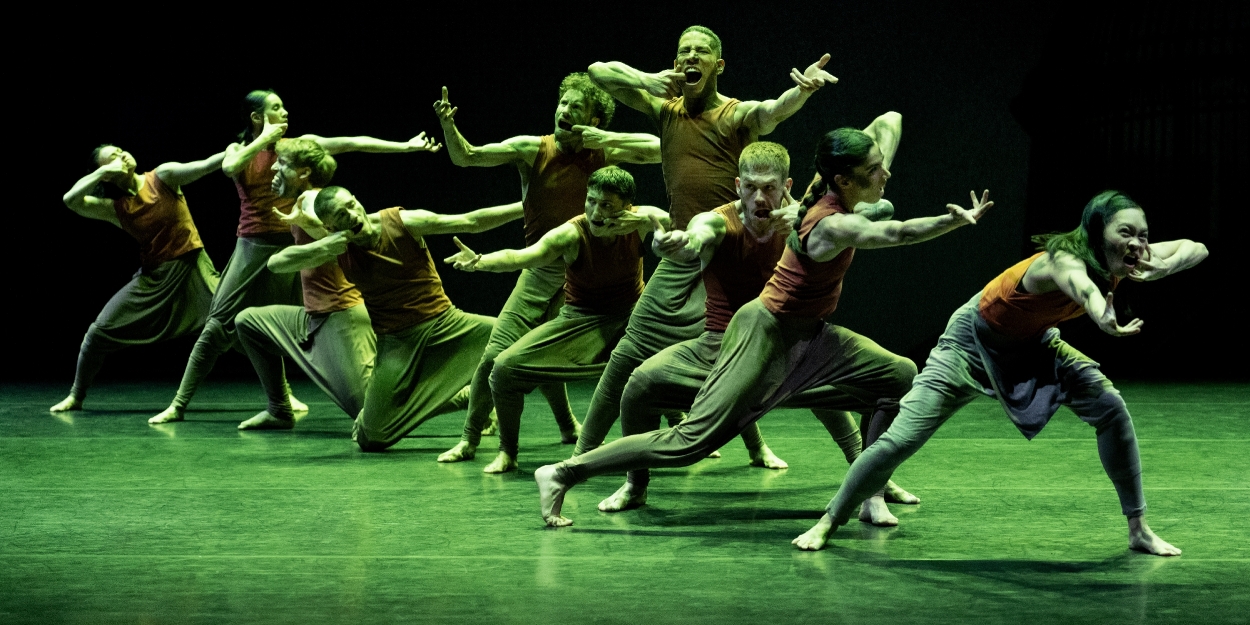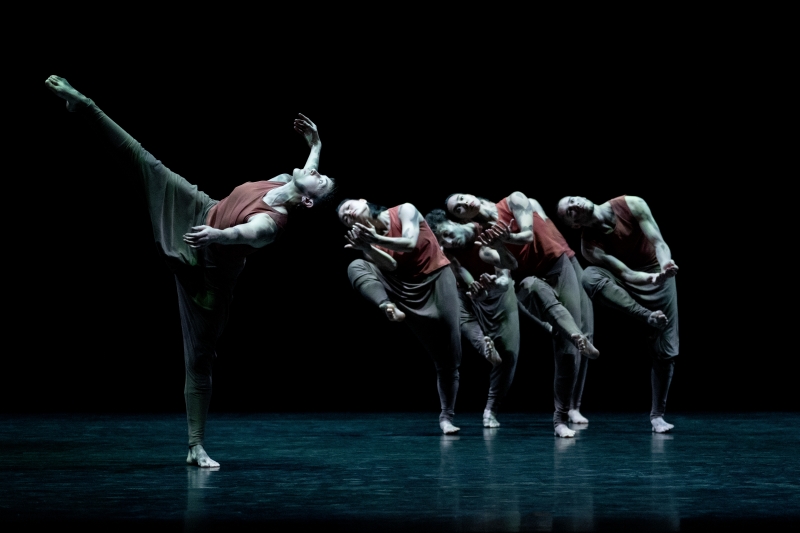Review: 'The Jungle Book Reimagined' Takes a Dark Look at Humankind
The beloved children’s classic gets a beautifully bleak update that compels audiences to confront our climate disaster and our predatory nature

There’s nothing more terrifying than staring into an imagined future that is as bleak as it is realistic. That kind of enforced self-awareness pervades Akram Khan's gritty, post-apocalyptic The Jungle Book Reimagined.
Staged at the Lincoln Theatre’s Rose Hall November 16-18, The Jungle Book Reimagined uses music, movement and animation to reinvent the Rudyard Kipling classic. Khan, Creative Associate Mavin Khoo, and Writer Tariq Jordan tell the story of a futuristic Mowgli, a climate refugee, as he seeks solace among a group of animals besieged by mankind’s predatory destruction. The work features an excellent score by the BAFTA and Olivier Award-winning composer Jocelyn Pook, a small cast of just 10 dancers, and a stage cleverly designed to merge animation, visual projections and live-action.
 The lights rise on an eerie, shadowy green near-future. The dancers inhabit a society plagued by ever-increasing climate disasters. The music, a maniacal chant that sounds like a call to arms, swells and the dancers wilt like dying plants. Then the rains begin. The story begins to unfold with animation so visually-clear and thoughtfully-adapted that the line between human form and digital creation disappears. We follow a gender-bent Mowgli as she is ripped from her family and lost among a group of panthers. The dancers, who just moments ago were so obviously human, are now strikingly feline. They pounce and slink their way around their human stranger as they determine whether to abandon her. The dancers undergo this human-to-animal and animal-to-animal transformation several times and, while deftly acted, different costumes or or just a different color shirt could provide additional visual clarity.
The lights rise on an eerie, shadowy green near-future. The dancers inhabit a society plagued by ever-increasing climate disasters. The music, a maniacal chant that sounds like a call to arms, swells and the dancers wilt like dying plants. Then the rains begin. The story begins to unfold with animation so visually-clear and thoughtfully-adapted that the line between human form and digital creation disappears. We follow a gender-bent Mowgli as she is ripped from her family and lost among a group of panthers. The dancers, who just moments ago were so obviously human, are now strikingly feline. They pounce and slink their way around their human stranger as they determine whether to abandon her. The dancers undergo this human-to-animal and animal-to-animal transformation several times and, while deftly acted, different costumes or or just a different color shirt could provide additional visual clarity.
As Mowgli continues her journey, searching desperately for a sense of home and belonging in an animal kingdom rife with the in-fighting, xenophobia and fear that corrupts human populations, it’s clear this is not a show for children, despite being billed as a family-friend event. In this work, the idea of good and evil is murky, and the indecision on who is right may be too realistic for a young mind forged on Disney classics. Gunshots and monologues on the role humans play in harming our natural habitats also creates feelings of dread and fear that, in our current world, just feel stifling regardless of age.
 This show is as beautiful as it is oppressive, but the score is the true masterpiece. The music and dialogue move the story forward, grounding audiences in a sense of awe rather than total despair. While the monologues Mowgli’s animated-mother gives in flashbacks are heavy-handed in their political messaging, it is still remarkable that so many ideas can fit so into a work that is not, at bottom, a theater production. This is never more apparent than in the nuanced and innovative ways the dancers embody the limited dialogue. It’s never not fun to see how a monkey may dance through a diatribe against laziness. However, when not performing dialogue, the dance tends to slow the work down. Khan’s choreography, so creatively complex and expertly executed, could better serve the narrative rather than just the visual aesthetic.
This show is as beautiful as it is oppressive, but the score is the true masterpiece. The music and dialogue move the story forward, grounding audiences in a sense of awe rather than total despair. While the monologues Mowgli’s animated-mother gives in flashbacks are heavy-handed in their political messaging, it is still remarkable that so many ideas can fit so into a work that is not, at bottom, a theater production. This is never more apparent than in the nuanced and innovative ways the dancers embody the limited dialogue. It’s never not fun to see how a monkey may dance through a diatribe against laziness. However, when not performing dialogue, the dance tends to slow the work down. Khan’s choreography, so creatively complex and expertly executed, could better serve the narrative rather than just the visual aesthetic.
For those who seek an aggressive self-awareness and require art to instigate a kind of anxiety, this is the ideal show. In forgoing subtly, it strips Kipling’s original work of its escapism and instead offers audiences a darker take on humankind’s refusal to reckon with the harms we cause.
Tickets are available on a Choose-What-You-Pay basis. There is a suggested ticket price of $35.00, as well as options to pay more or less.
Reader Reviews

Videos

